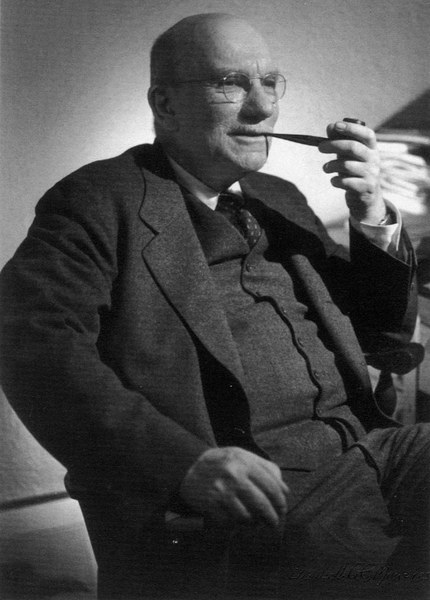Albert Mathias Friend, Jr. (1894-1956).
Wilhelm Koehler’s collaborative research plan, which brought about the creation of the Research Archives of Byzantine monuments between 1941 and 1944, was not destined to endure at Dumbarton Oaks. The catalyst for the change was the arrival at Dumbarton Oaks of the Princeton University medieval art historian, Albert Mathias Friend Jr. (1894–1956), known as Bert Friend to his colleagues. In 1943, Friend was first appointed to the Dumbarton Oaks Board of Scholars, an eleven-member advisory group charged with making recommendations on all scholarly activities at Dumbarton Oaks. (This board was later abolished in 1975 and replaced by the senior fellows committee.) As a board member, Friend immediately began proposing alterations to the Dumbarton Oaks academic program. Foremost among his proposals was the recommendation that Dumbarton Oaks offer greater support to Byzantinists of recognized standing in the field and, most importantly, facilitate the publication of their research: “All research that is worth while should eventuate in publication. When this is realized by all concerned, the trivial and the isolated types of work which have plagued the humanities are not likely to waste the energies of scholars and the funds of Dumbarton Oaks.”
Friend strongly felt that Dumbarton Oaks would only become a premier Byzantine studies center by making such prestigious appointments, preferably of long-term duration, and by allowing the appointed scholars to engage in research that would lead to groundbreaking symposia and publications. In making these recommendations, Friend was supported by his fellow board member, George La Piana (1879–1971), who was a senior fellow in residence at Dumbarton Oaks during the 1943–44 academic year. Both men believed that junior fellowship appointments should continue at Dumbarton Oaks, primarily in order to insure continuity in the fields of Byzantine studies. Friend recommended:
I would keep the system of Junior Fellows much as it is at present but I would reduce the number, as I have had to this year, to three or four. We could then get the best young scholars who would profit by working at a higher level of efficiency than in the past. I don’t think there are, at any one time, more than four or five in the country in the Byzantine field who would be worth having, yet in order to get new blood their presence is essential.
However, Friend and La Piana argued that junior fellowships should typically be limited to one-year terms and that only those who had shown great promise should be reappointed at the more senior rank of fellow—Milton Anastos, Paul Alexander, and Ernst Kitzinger were held up as examples. Indeed, each of these men were appointed as fellows in 1945 and as assistant professors in 1946.
Friend rose rapidly in the administrative hierarchy at Dumbarton Oaks, although he was disappointed not to have been named director of the institution in 1946, a position that went to John Seymour Thacher. However, Friend was named resident scholar between 1944 and 1946, Henri Focillon Visiting Scholar in Charge of Research in 1947–1948, and director of Byzantine Studies from 1948 until 1954.
In a review of the state of Byzantine scholarship in America, the Byzantine art historian Kurt Weitzmann summarized Friend’s contributions at Dumbarton Oaks:
In the two succeeding years A. M. Friend became the Director of Studies and devoted much of his time to giving to the institution a more permanent organizational structure. He brought to Dumbarton Oaks Sirarpie Der Nersessian, well known for her various studies in the Byzantine as well as in the Armenian field, as a permanent senior scholar, a position which will give her the opportunity to center her energies on her comprehensive work on the illustrated Greek menologia as well as on many aspects of Armenian art. He also established a second category of researchers, so that a group of younger scholars, consisting at the moment of Milton Anastos, Paul Underwood, Ernst Kitzinger and Glanville Downey, is enabled to embark on long range projects in the Byzantine field. Moreover, Friend has achieved the integration of research in various aspects of Byzantine culture, including, besides the arts, history—represented by its doyen, A. A. Vasiliev—theology, literature, music, and other fields, thus giving to Dumbarton Oaks the character of a well rounded institute in the Byzantine field.
—Kurt Weitzmann, “Byzantine Art and Scholarship in America,” American Journal of Archaeology 51, no. 4 (1947): 414.


